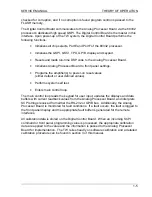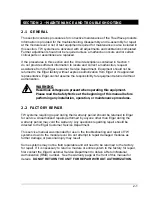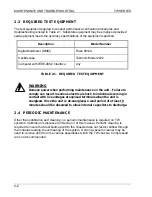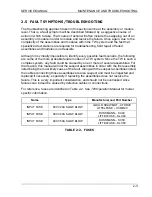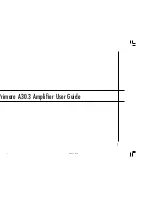
SERVICE MANUAL
THEORY OF OPERATION
1-5
checked for corruption, and if no corruption is found program control is passed to the
FLASH memory.
The Digital Control Board communicates to the Analog Processor Board via the 68332
processor’s dedicated high speed QSPI. The Digital Control Board is the master in this
interface. Upon power-up of the TW system, the Digital Control Board performs the
following functions:
•
Initializes all chip selects, PortE and PortF of the 68332 processor.
•
Initializes the QSPI, QSCI, TPU, GPIB, display and keypad.
•
Resets and loads run-time DSP code to the Analog Processor Board.
•
Initializes Analog Processor Board to front panel settings.
•
Programs the amplifier(s) to power-on reset values
(either default or user defined values).
•
Performs system self test.
•
Enters main control loop.
The main control loop reads the keypad for user input, updates the displays and data
buffers with current readback values from the Analog Processor Board, and interprets
SCPI strings received from either the RS-232 or GPIB bus. Additionally, the Analog
Processor Board is monitored for fault conditions. If a fault occurs, the fault is logged to
the front panel display and the appropriate fault buffer is generated for the remote
interfaces.
All calibration data is stored on the Digital Control Board. When an incoming SCPI
command or front panel programming value is processed, the appropriate calibration
data are applied to the value and the information is passed to the Analog Processor
Board for implementation. The TW relies heavily on software calibration and a detailed
calibration procedure can be found in section 3 of this manual.
Summary of Contents for TrueWave TW5250
Page 2: ......
Page 4: ...ii This page intentionally left blank...
Page 10: ...TABLE OF CONTENTS TW SERIES viii This page intentionally left blank...
Page 36: ...MAINTENANCE AND TROUBLESHOOTING TW SERIES 2 16 This page intentionally left blank...
Page 80: ...CALIBRATION TW SERIES 3 44 This page intentionally left blank...















